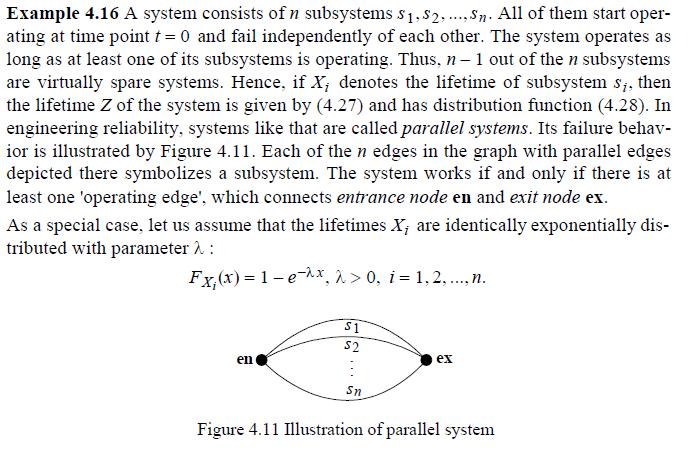At time (t=0), a parallel system (S) consisting of two elements (e_{1}) and (e_{2}) starts operating. Their
Question:
At time \(t=0\), a parallel system \(S\) consisting of two elements \(e_{1}\) and \(e_{2}\) starts operating. Their lifetimes \(X_{1}\) and \(X_{2}\) are dependent with joint survival function
\[\bar{F}\left(x_{1}, x_{2}\right)=P\left(X_{1}>x_{1}, X_{2}>x_{2}\right)=\frac{1}{e^{+0.1 x_{1}}+e^{+0.2 x_{2}}-1}, \quad x_{1}, x_{2} \geq 0\]
(1) What are the distribution functions of \(X_{1}\) and \(X_{2}\) ?
(2) What is the probability that the system survives the interval \([0,10]\) ?
Note By definition, a parallel system is fully operating at a time point \(t\) if at least one of its elements is still operating at time \(t\), i.e., a parallel system fails at that time point when the last of its operating elements fails. See also example 4.16, page 176.
Data from Example 4.16

Step by Step Answer:

Applied Probability And Stochastic Processes
ISBN: 9780367658496
2nd Edition
Authors: Frank Beichelt





